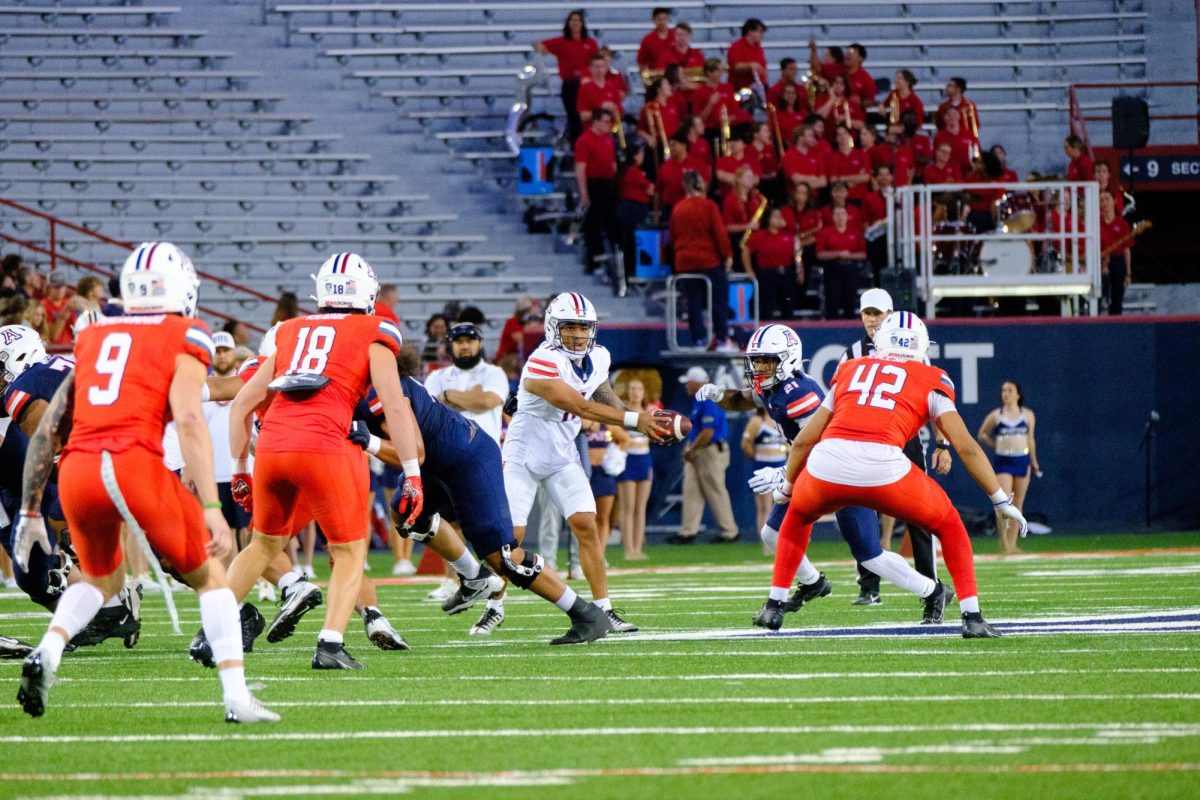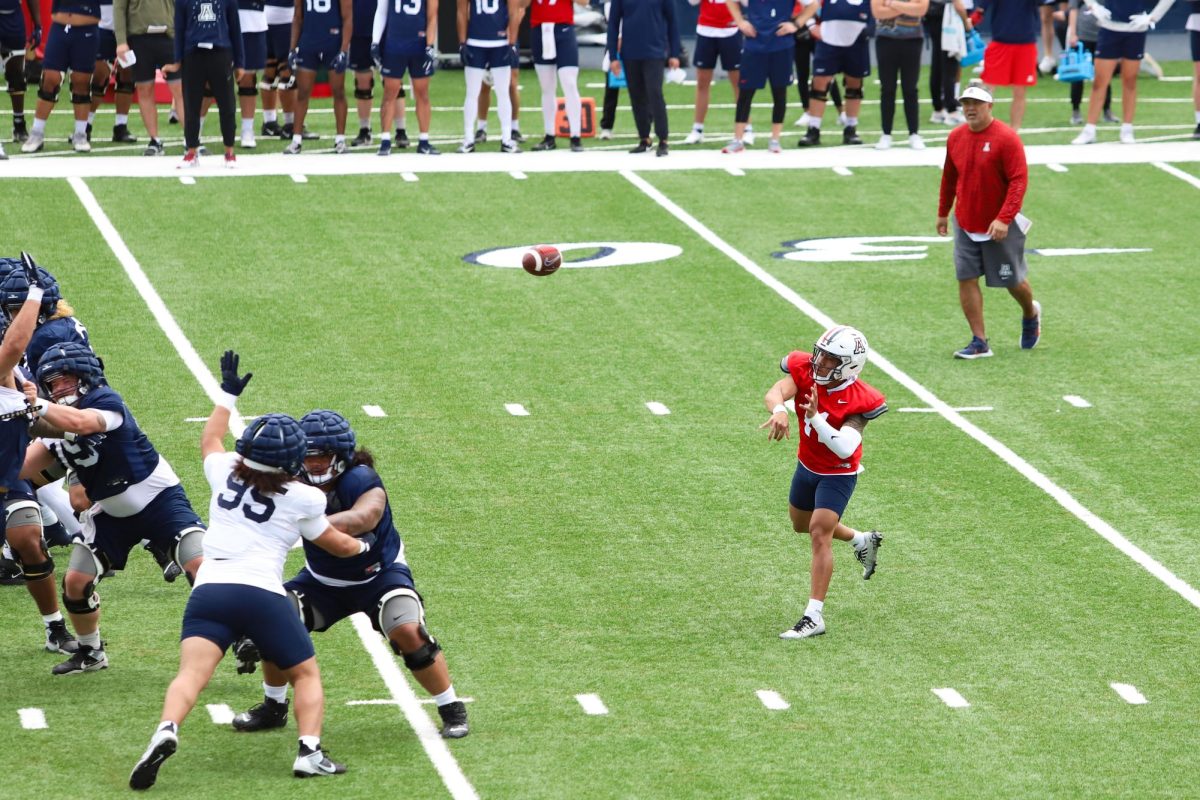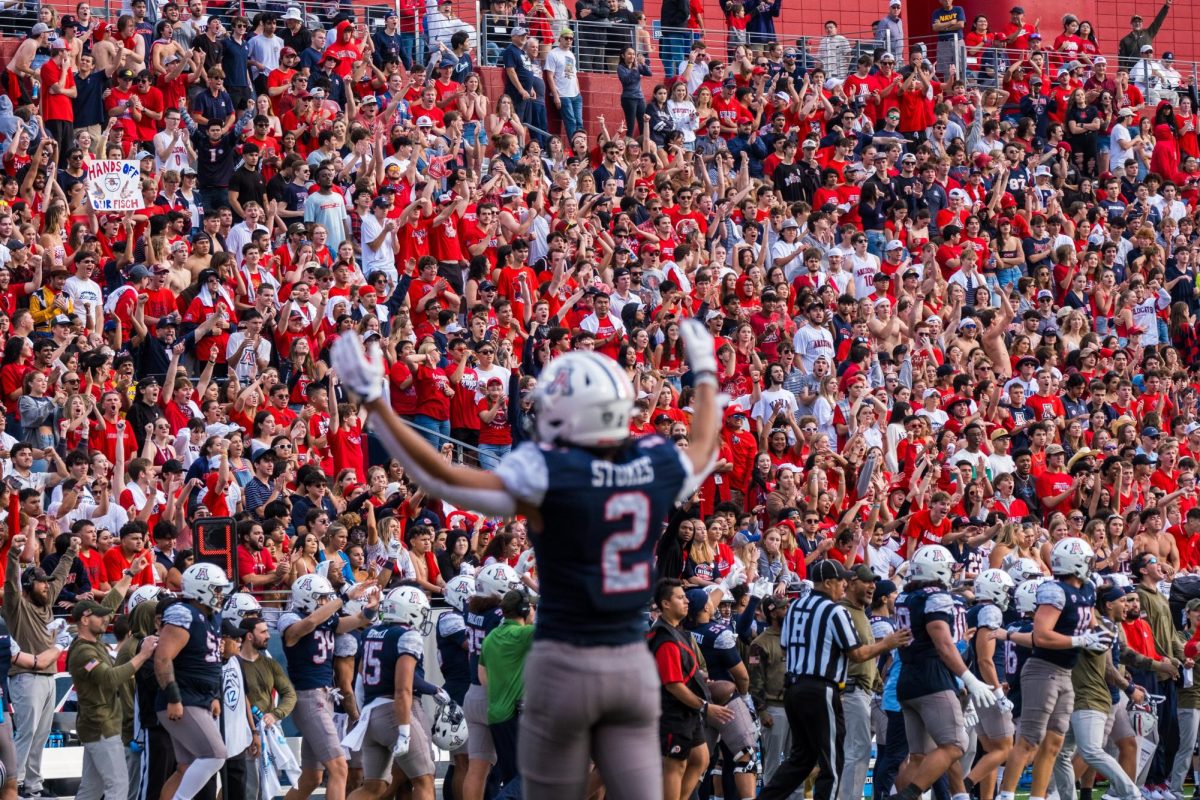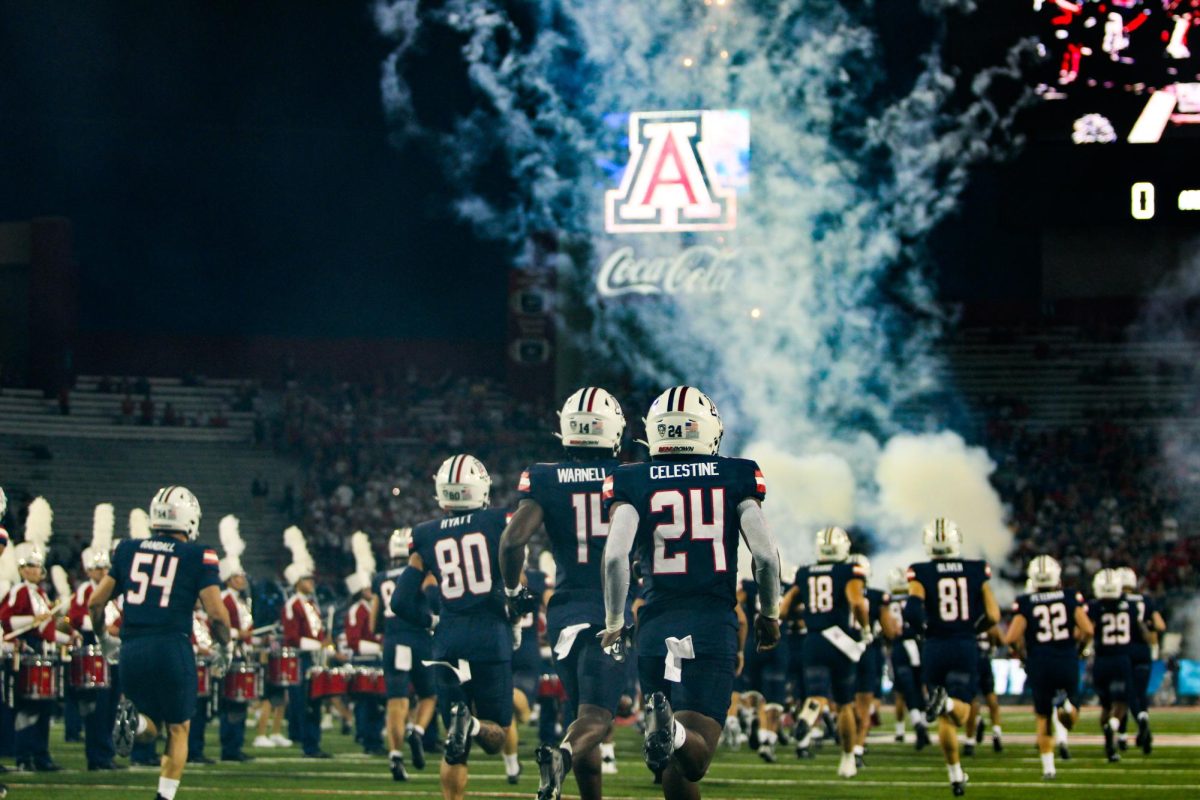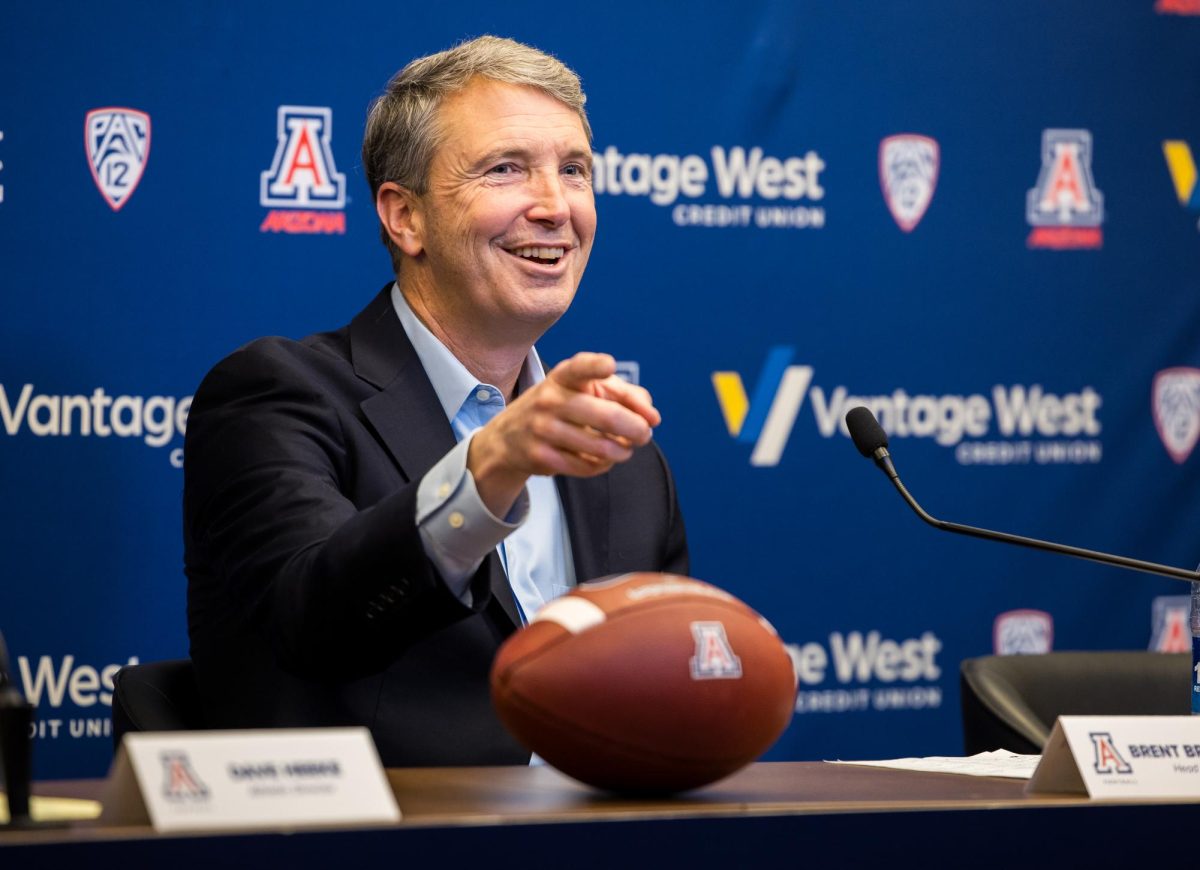Rich Rodriguez is bringing a read-option offense to Tucson. The offense includes constant motion, multiple personnel sets and a group of players that do everything at full-speed. But while all of that is happening, there’s one thing notably absent from the coach’s variation of the spread: a huddle.
“I think a huddle is the biggest waste of time in football,” Rodriguez said at his introductory press conference on Tuesday. “We’re not going to hold hands and sing Kumbaya out there. When we’re on the field, we’re going to play ball and play fast.”
Rodriguez’s trademark offense got its start during his first season as the head coach at Glenville State College in West Virginia. The 48-year-old coach said the team was shut out seven times and outscored 360-20 the season before he took the job. Glenville State was playing with a depleted roster of 25 undersized players, so Rodriguez knew he needed to get innovative. He said he tried to find five linemen to at least slow down the defense for a second, put his quarterback in the shotgun, and went from there.
Rodriguez and his staff studied the run and shoot offense, which is nearly entirely based off of pre-snap motion used to create mismatches and in-play adjustments and reads based off of coverage made by receivers and the quarterback.
“Whenever a team goes in the two-minute drill at the end of a half or game, they go up and down the field,” Rodriguez said. “So if you’re a fan, you’re like, ‘Shoot, why don’t they do that the whole game?’ So I thought, ‘OK, let’s try this.’”
One of the biggest keys to Rodriguez’s offense is the number of different ways it can be used. While most will remember his run-heavy offenses at West Virginia and Michigan — both ran the ball about 70 percent of the time — Rodriguez specializes in tailoring it to suit his personnel.
“He’s a multiple formation guy,” said Arizona quarterback coach Frank Scelfo, who coached with Rodriguez at Tulane. “He has taken some guys and put up remarkable numbers.”
Glenville State won four consecutive conference championships and lost in the 1993 NAIA championship game while using Rodriguez’s offense, which he said was pass-heavy at the time. But despite its success, Rodriguez said that his offense didn’t get much attention while at Glenville State from anyone other than Tommy Bowden, who, along with Rodriguez, ran a quarterback and receiver camp.
Bowden eventually hired Rodriguez as the offensive coordinator and quarterbacks coach at Tulane, but Rodriguez said he had reservations about whether or not his offense would work at the Division I level.
“I thought before I went there, ‘If you ever want to be a head coach in Division I, you’ve got to show your offense can work at that level,’” Rodriguez said.
The offense’s transition to Division I football didn’t go smoothly. In Rodriguez’s first spring at Tulane, he said quarterback Shaun King got sacked 22 times, and that left some serious doubts about the system’s effectiveness in his mind.
“We couldn’t get a first down,” Rodriguez said. “It got so bad that they had a female trainer and let her call defenses, and I still couldn’t get a first down.”
But as Rodriguez learned, drastically different offensive styles can take a couple of seasons to fully implement. He said he questioned himself after the first spring at Tulane, but Bowden told him to stay patient. Then the next fall, “it just took off,” Rodriguez said.
Rodriguez’s offensive schemes aren’t the only things that are different than what many programs run. The coach has run a 3-3-5 defense at his last two stops instead of more traditional sets like a 4-3, 3-4 or 4-2-5. Many of Rodriguez’s critics cite the defensive front as a large part of his failures on that side of the ball while at Michigan, and the coach said he isn’t dead-set on continuing to use it.
Rodriguez said he’s been a fan of using uncommon defensive fronts in the past because it was a new look for offenses to deal with, but with the way that defenses are evolving and using different sets for each down and situation, the defensive front lost its novelty.
“Defensively, I’m a little more of an open book,” Rodriguez said. “It’s going to depend on the coordinator I pick and the defensive staff. We’ll get together and decide that in three or four weeks.”



